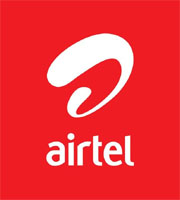What Do You Prefer: Digital or Traditional Media?
Urban consumers in China, Brazil and Singapore are proving to be the world’s most voracious users of digital media, powered by the rapid uptake of smartphones and tablets according to the KPMG International 2013 Digital Debate.
All around the world, consumers are showing an insatiable hunger for media in all its forms be it digital or offline, according to the survey which measures the current impact of digital and traditional content on approximately 9,000 consumers in nine countries around the world. KPMG released the survey findings today, Jan. 21.
“Consumers in China, Brazil and Singapore across all age groups are accessing and using media at an astonishing pace,” says Gary Matuszak, KPMG’s Global Chair, Technology, Media and Telecommunications.
“They are quick to acquire hand-held mobile devices, and are incredibly receptive to all forms of information, news and entertainment from TV, internet, newspapers, magazines and radio.”
[ Also Read: Digital Ad Revenues in the U.S. to Grow 13% ]
The survey reveals that a new generation of mobile-centric consumers is getting its first media experience via devices. This growing segment has a much greater preference for digital media, and the coming of next-generation, high-speed mobile networks will likely accelerate this trend.
Among urban Chinese consumers, 78 percent own or intend to own a smartphone, slightly more than laptops (76 percent), and 51 percent say they have or plan to have a tablet computer – a higher penetration than the US, UK, Germany or Australia.
Overall, 53 percent of total respondents own or intend to own a smartphone and just over a quarter (26%), a tablet computer.
[ Also Read: Can a Mobile Device Double as Phone and TV? ]
Moreover, consumers from China, Brazil and Singapore not only prefer to access their content digitally, they are more willing to pay for it. Mobile-centric consumers’ propensity to pay for content may provide invaluable insights to media and tech providers in mastering breakthrough revenue models, suggests KPMG.
Interestingly, according to the survey, consumers across all markets spend a similar amount of time accessing media online as they do using traditional media.
[ Also Read: Papa…Papa, Have You Seen a Newspaper? ]
Visiting social networking sites, accessing maps and directions, and viewing news online are the top three digital activities across all markets. Consumers in China and Brazil lead all countries in accessing social networking, news and downloading music.
In the traditional media space, TV is still the most popular traditional medium across all markets followed by listening to the radio and thirdly, print such as newspapers and magazines.
Most consumers are still spending more money offline in traditional activities than online, although this varies considerably according to country and type of media.
Overall, however, consumer spending for digital content is gradually rising, with respondents reporting higher year-on-year spend for every form of digital media.
[ Also Read: Top 20 Digital Brand Campaigns of 2012 ]
In North America and Europe, for example, 37 and 20 percent of consumers, respectively, say they have increased their spend in accessing magazine applications compared to last year.
While China, Brazil and Singapore lead in their willingness to pay for online content, consumers in North America and Europe show a higher willingness to only pay for access to certain content, such as dating sites and books and less on news, music and games, for example.
[ Also Read: Why You Should Not Advertise on Facebook ]
Offline, consumers are cutting their expenditures on packaged media, especially CDs, DVDs and console games, with the same proportion of all respondents (23 percent) saying they have spent less on CDs and DVDs in the last 12 months. The big offline winners are those tied to a venue: sporting events, concerts and cinemas, the survey reveals.
The ‘second screen’ experience lets consumers interact with multiple connected devices simultaneously often while also watching TV. Nearly half (48 percent) of all Chinese consumers say they use their smartphone while viewing the TV, while 60 percent say they use their laptop while watching TV, around half (52 percent) read newspapers and around a third (36 percent) are accessing social networks.
Half of all North American respondents say they watch TV and access the internet for reasons other than social networking using a laptop or a PC. Forty-four percent of European respondents say they do the same.
[ Also Read: “Days of the Dumb Box Coming to an End” ]
Accessing these multiple devices concurrently appears to impact advertising effectiveness — but not everywhere, according to the survey.
Urban consumers in Brazil, China and Singapore have the highest receptivity to advertising and accept that it can underwrite the cost of the content they enjoy. Seventy-seven percent of Chinese consumers and 62 percent of Brazilian consumers are happy to receive online ads in return for lower-priced or free services.
The story is a little different in the more developed markets, where the aversion to advertising is greater, with only 46 percent of North Americans and 39 percent Europeans willing to accept such a deal.
To satisfy the intense information needs of tech-savvy consumers, content, devices and distribution channels need to be integrated, the survey suggests. It is unlikely that any single player can master all these components, making cooperation and collaboration a necessary approach.
Photo courtesy: KPMG













